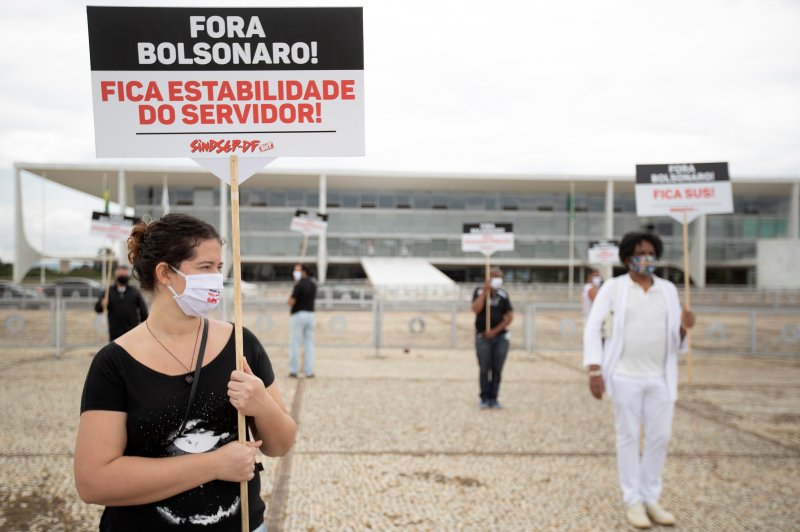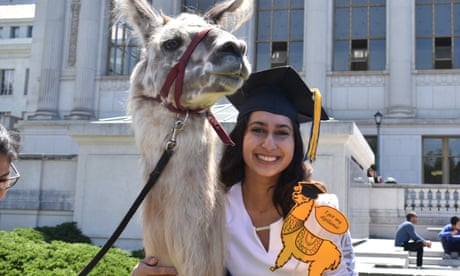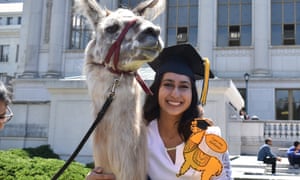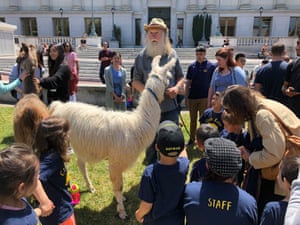
AFP/File / JEFF KOWALSKY
Detroit's 'Big Three' are scheduled to resume manufacturing after shutting plants in March due to the coronavirus
Detroit's auto giants are keen to resume production this week, but there will be unease on assembly lines where social distancing is difficult and worries about the deadly coronavirus persist.
Motor City carmakers insist they are taking precautions to protect employees for the ramp-up that marks a key moment in the attempted relaunching of the US economy.
But not everyone is convinced.
"I am expecting a bumpy ride," said one United Auto Workers official, who asked for anonymity because he was not authorized to speak publicly.
The "Big Three," which have the experience of relaunching in Asia, have set their US restart for May 18.
That is the same day Tesla has been cleared by local regulators in California to resume full production following a faceoff between public health officials and brash Tesla boss Elon Musk that apparently was resolved with a compromise on enhanced safety measures.
Unlike California, Michigan has been the site of armed marches to the state capitol in protest over restrictions imposed by Democratic Governor Gretchen Whitmer. Under pressure from the state's automotive suppliers and carmakers, she modified her stay-at-home orders to allow for the resumption of manufacturing with social distancing.
After effectively shutting down in March to combat the deadly virus, US carmakers say they are now ready to get back to business.
"Above everything else, our top priority has always been to do what is right for our employees," Fiat Chrysler CEO Mike Manley said in a statement this week.
"We have worked closely with the unions to establish protocols that will ensure our employees feel safe at work and that every step possible has been taken to protect them."
- Safeguarding plants -
The monumental tasks at FCA includes sanitizing 57 million square feet of production space and implementing new disinfection schedules to maintain hygiene. Some 4,700 work stations were modified to allow for social distancing.

Detroit's auto giants are keen to resume production this week, but there will be unease on assembly lines where social distancing is difficult and worries about the deadly coronavirus persist.
Motor City carmakers insist they are taking precautions to protect employees for the ramp-up that marks a key moment in the attempted relaunching of the US economy.
But not everyone is convinced.
"I am expecting a bumpy ride," said one United Auto Workers official, who asked for anonymity because he was not authorized to speak publicly.
The "Big Three," which have the experience of relaunching in Asia, have set their US restart for May 18.
That is the same day Tesla has been cleared by local regulators in California to resume full production following a faceoff between public health officials and brash Tesla boss Elon Musk that apparently was resolved with a compromise on enhanced safety measures.
Unlike California, Michigan has been the site of armed marches to the state capitol in protest over restrictions imposed by Democratic Governor Gretchen Whitmer. Under pressure from the state's automotive suppliers and carmakers, she modified her stay-at-home orders to allow for the resumption of manufacturing with social distancing.
After effectively shutting down in March to combat the deadly virus, US carmakers say they are now ready to get back to business.
"Above everything else, our top priority has always been to do what is right for our employees," Fiat Chrysler CEO Mike Manley said in a statement this week.
"We have worked closely with the unions to establish protocols that will ensure our employees feel safe at work and that every step possible has been taken to protect them."
- Safeguarding plants -
The monumental tasks at FCA includes sanitizing 57 million square feet of production space and implementing new disinfection schedules to maintain hygiene. Some 4,700 work stations were modified to allow for social distancing.

GETTY IMAGES NORTH AMERICA/AFP/File / BILL PUGLIANO
Michigan Governor Gretchen Whitmer has faced criticism for strict stay-at-home orders that are beginning to ease on better trends for the coronavirus in Detroit
Temperature checks and daily health self-screening are required for all employees and visitors; start times will be staggered; and break and lunch times will be altered to increase social distancing. Everyone will have to wear face masks and safety goggles, FCA officials said.
Manley said FCA was using what it has learned from opening plants in China and Italy as it resumes production in the US, Mexico and Canada.
General Motors and Ford have described similar measures.
Jim Glynn, a vice president for workplace safety at GM, said on a conference call that workers will follow a strict protocol each day beginning with filling out a questionnaire and having a temperature scan.
"We have not had one case of person-to-person spread among our employees" when the rules have been followed at GM's plants in Asia and at US plants now making medical equipment, Glynn said.
However, none of the companies will test employees regularly. Kiersten Robinson, Ford's chief human resources officer, said during a conference call there is not enough capacity for regular tests.
- Good enough? -
Lack of testing is an issue for the UAW, which has stopped short of endorsing the industry's return to work model. The union also pressed GM, Ford and FCA to relax their policies on absenteeism so workers will stay home or self-quarantine if they feel ill.

Temperature checks and daily health self-screening are required for all employees and visitors; start times will be staggered; and break and lunch times will be altered to increase social distancing. Everyone will have to wear face masks and safety goggles, FCA officials said.
Manley said FCA was using what it has learned from opening plants in China and Italy as it resumes production in the US, Mexico and Canada.
General Motors and Ford have described similar measures.
Jim Glynn, a vice president for workplace safety at GM, said on a conference call that workers will follow a strict protocol each day beginning with filling out a questionnaire and having a temperature scan.
"We have not had one case of person-to-person spread among our employees" when the rules have been followed at GM's plants in Asia and at US plants now making medical equipment, Glynn said.
However, none of the companies will test employees regularly. Kiersten Robinson, Ford's chief human resources officer, said during a conference call there is not enough capacity for regular tests.
- Good enough? -
Lack of testing is an issue for the UAW, which has stopped short of endorsing the industry's return to work model. The union also pressed GM, Ford and FCA to relax their policies on absenteeism so workers will stay home or self-quarantine if they feel ill.

GETTY IMAGES NORTH AMERICA/AFP/File / SCOTT OLSON
A nearly-empty parking lot at an Illinois Fiat Chrysler Automobiles plant in March after US auto manufacturing effectively shut down due to the coronavirus
"While it is the companies that have the sole contractual right to determine the opening of plants, we have the contractual right to protect our members, and we will do so at all costs," said UAW President Rory Gamble.
"We have made it clear in our talks that we are asking for as much testing as possible at the current time."
Gamble has praised Whitmer's stay-at-home orders that have sparked gun-toting protests outside the state capitol building Michigan. The state has had about 50,000 confirmed coronavirus cases and nearly 4,800 fatalities.
The union's reticence is due in part to the fact more half of GM, Ford and FCA workers are over 50. Also, nearly three dozen auto workers have died from COVID-19, according to the UAW.
"I'm personally not ready to return to work and feel they are rushing to get us back into the plant to make a profit at the expense of those working there," said one anonymous worker in a Facebook post, adding that it is "almost impossible" to socially distance at an auto plant facing ambitious production targets.
"While it is the companies that have the sole contractual right to determine the opening of plants, we have the contractual right to protect our members, and we will do so at all costs," said UAW President Rory Gamble.
"We have made it clear in our talks that we are asking for as much testing as possible at the current time."
Gamble has praised Whitmer's stay-at-home orders that have sparked gun-toting protests outside the state capitol building Michigan. The state has had about 50,000 confirmed coronavirus cases and nearly 4,800 fatalities.
The union's reticence is due in part to the fact more half of GM, Ford and FCA workers are over 50. Also, nearly three dozen auto workers have died from COVID-19, according to the UAW.
"I'm personally not ready to return to work and feel they are rushing to get us back into the plant to make a profit at the expense of those working there," said one anonymous worker in a Facebook post, adding that it is "almost impossible" to socially distance at an auto plant facing ambitious production targets.






























